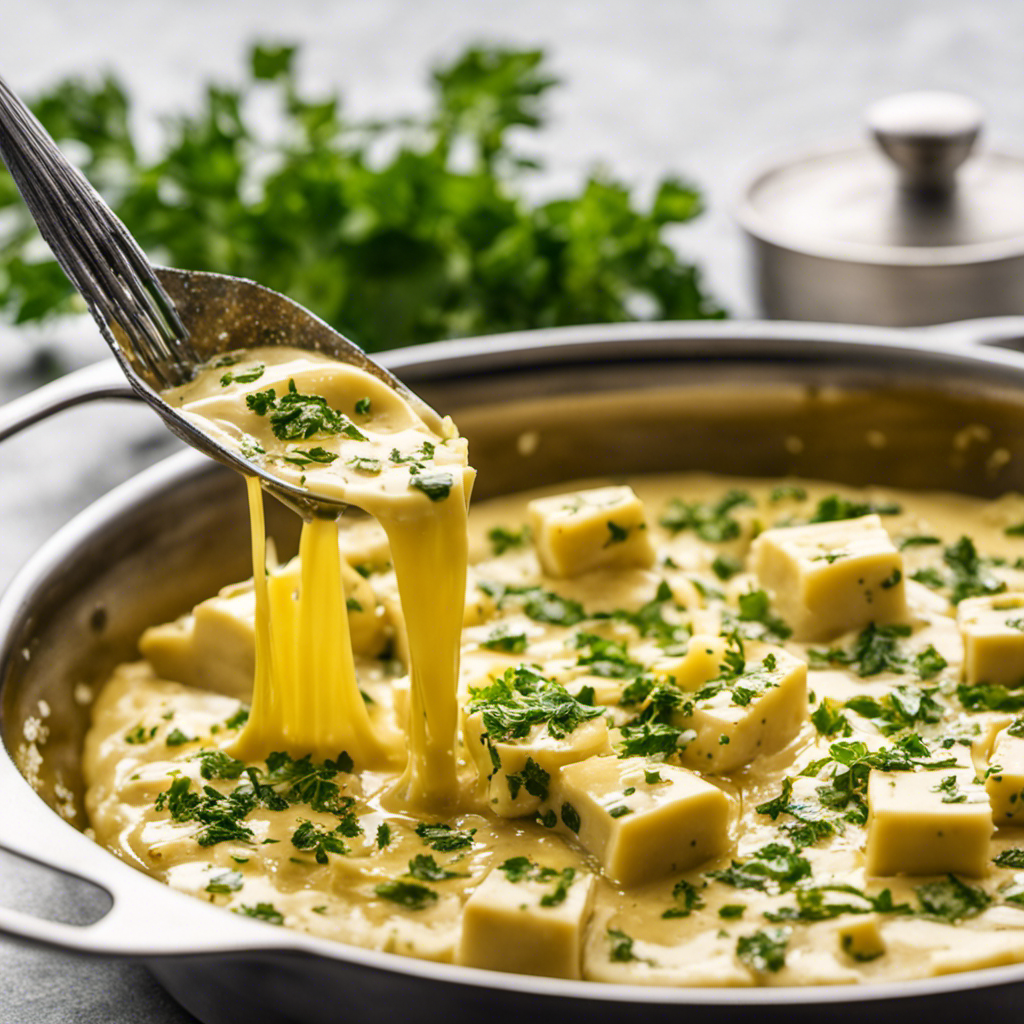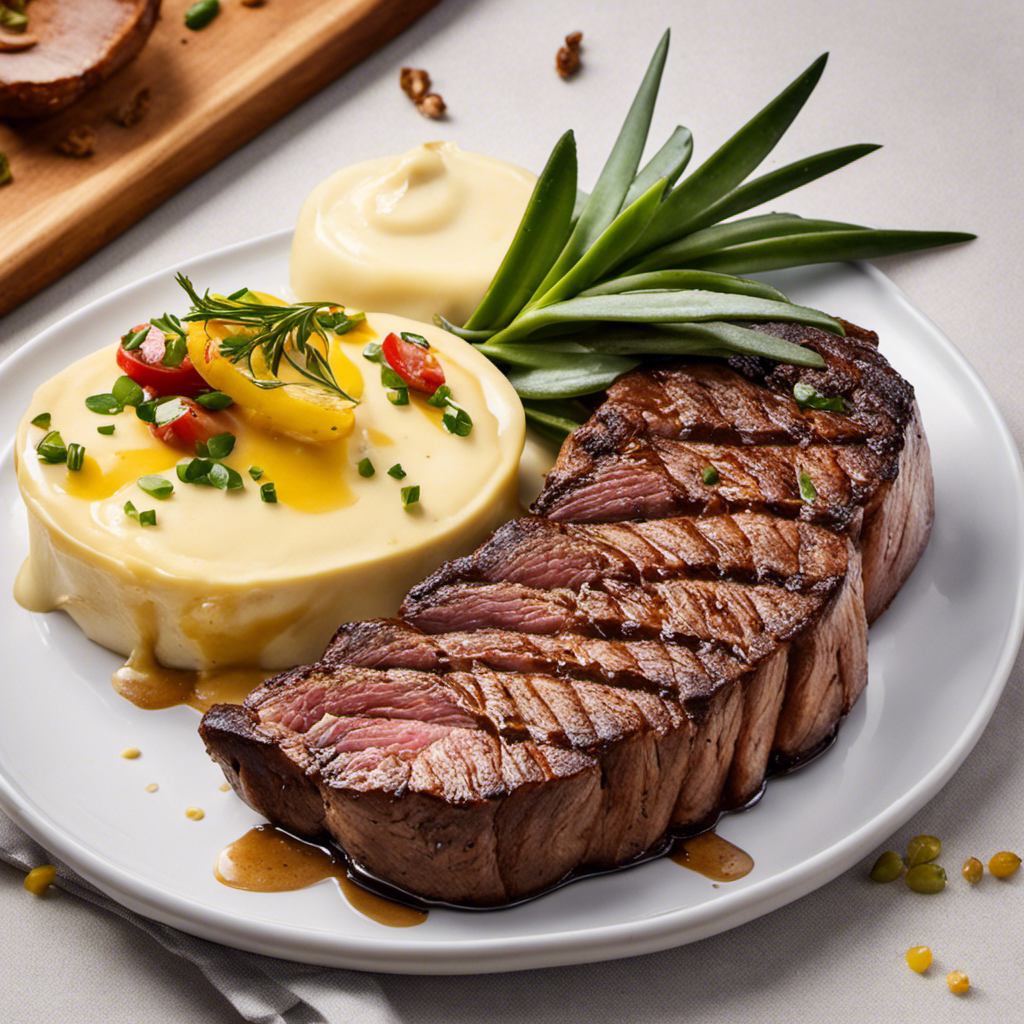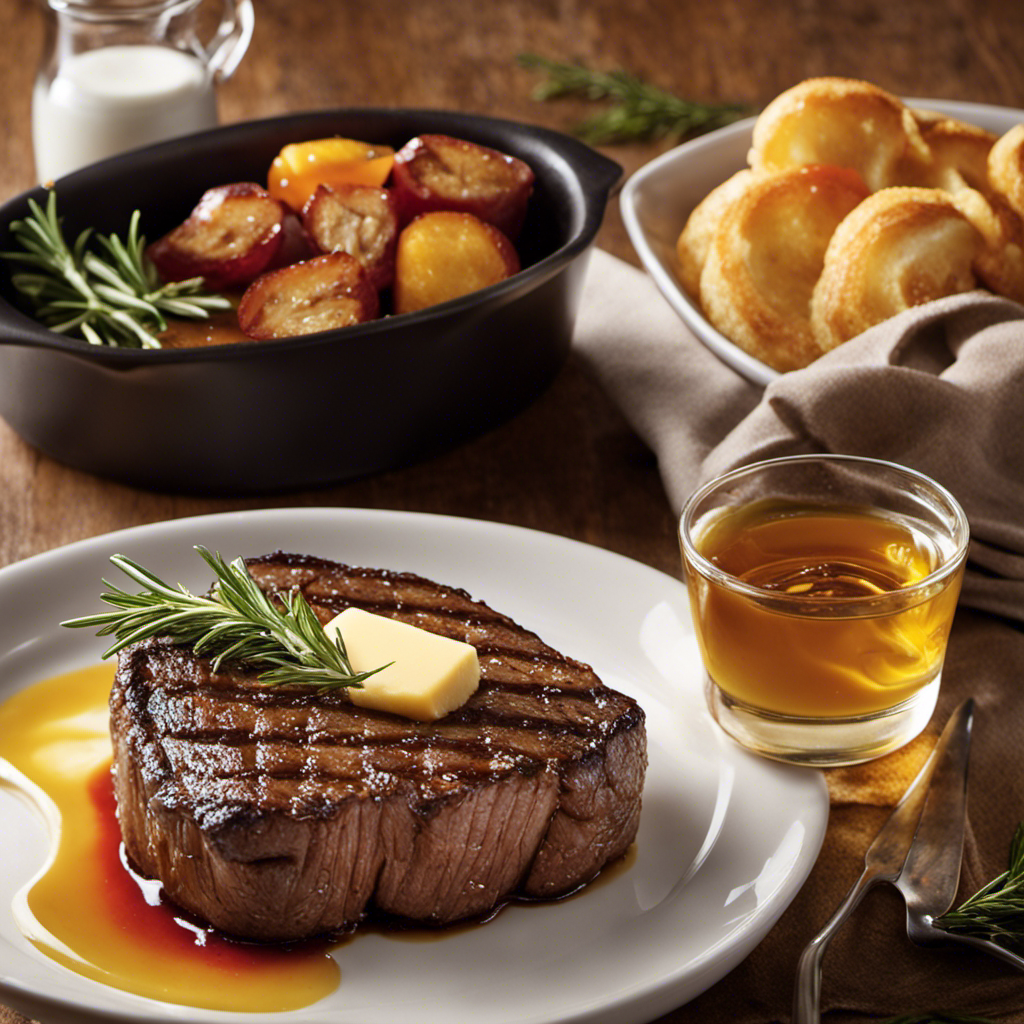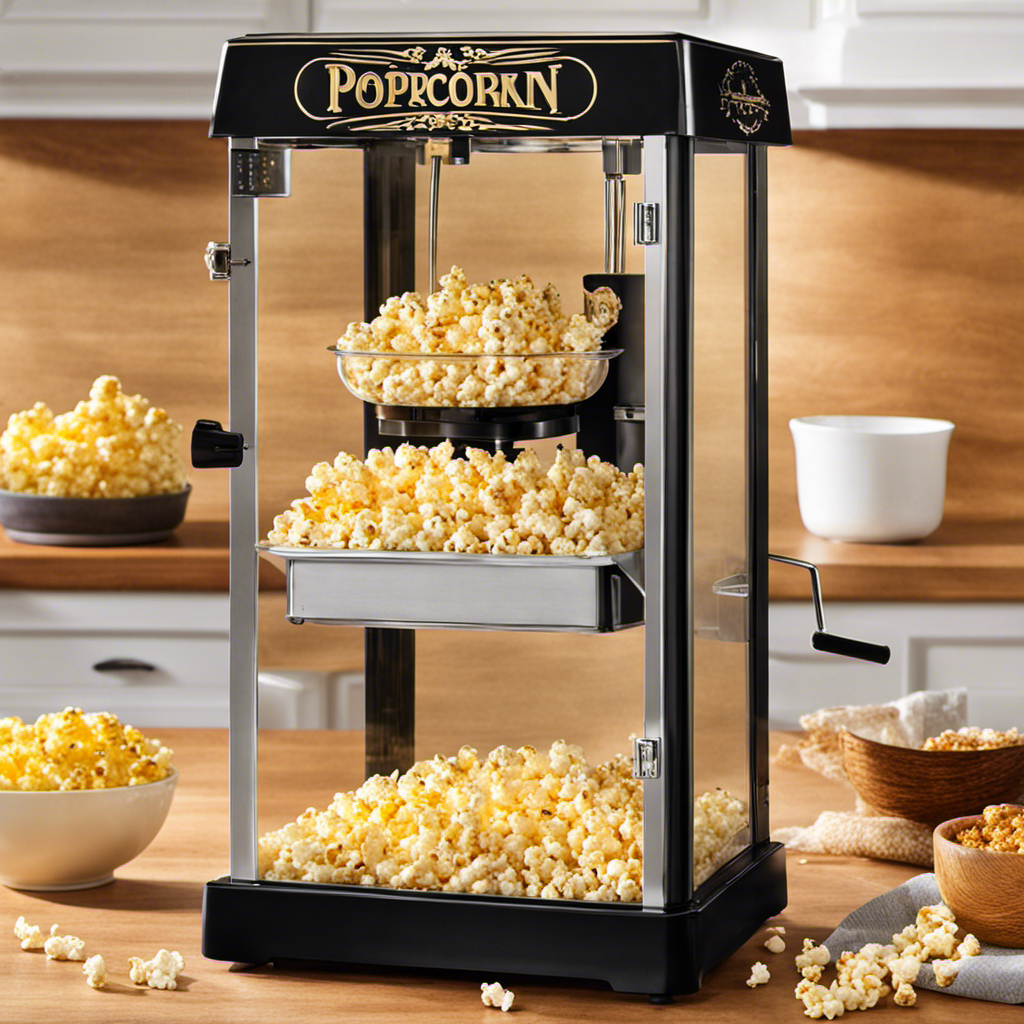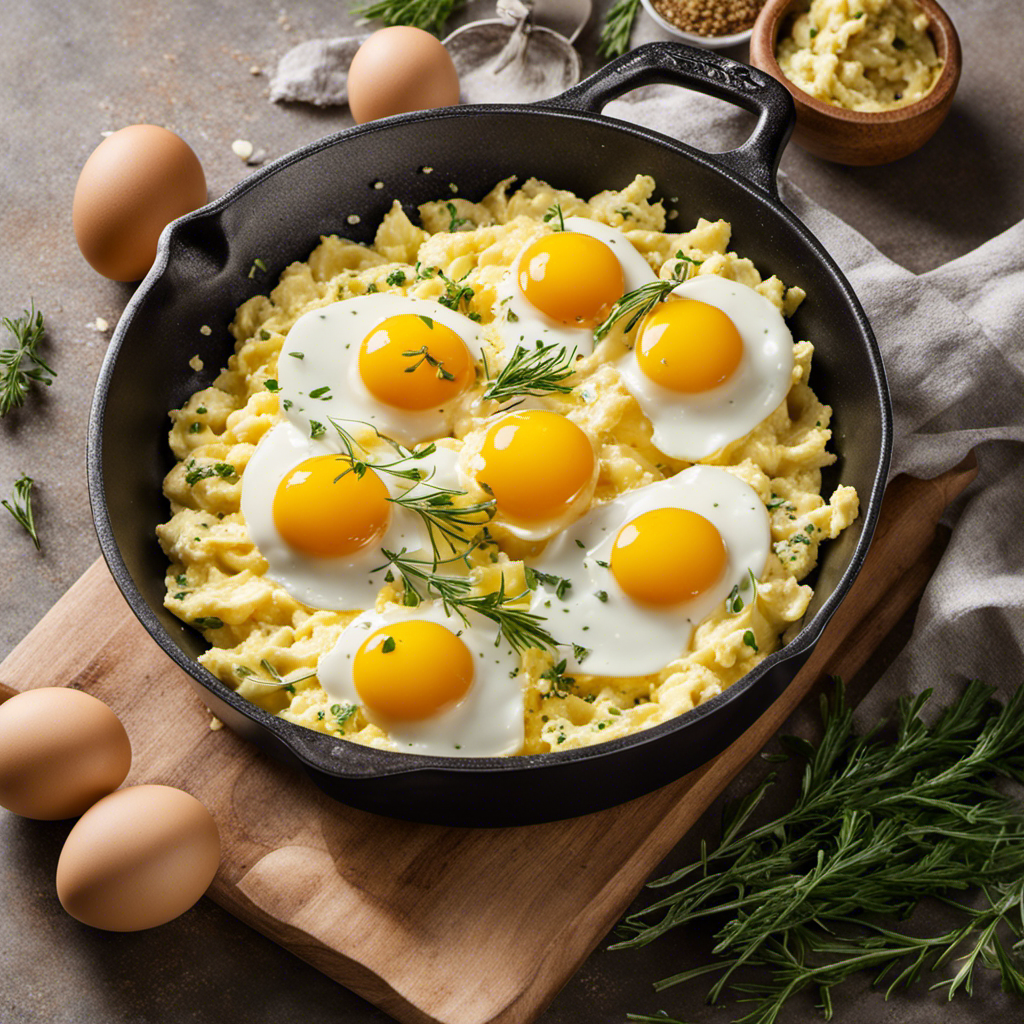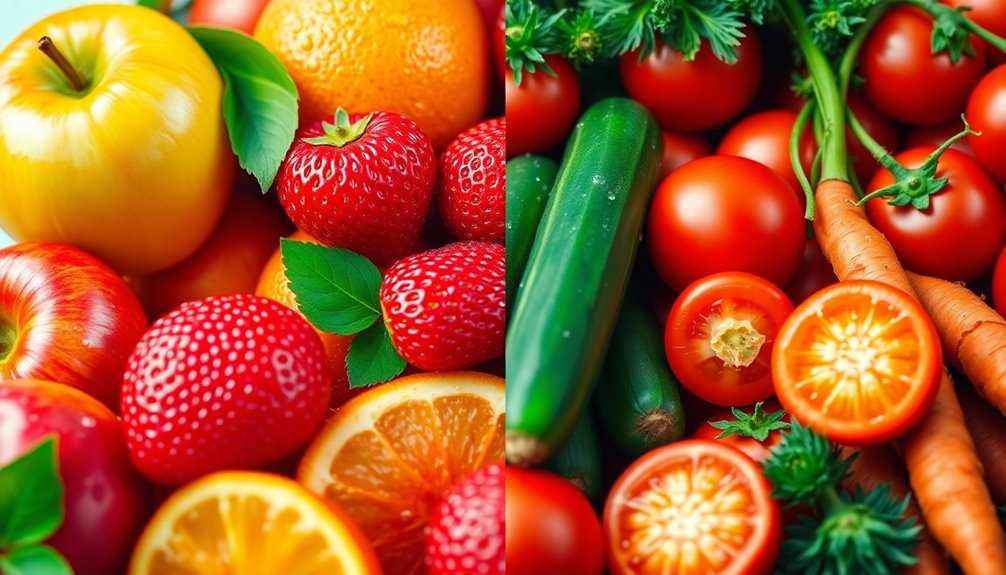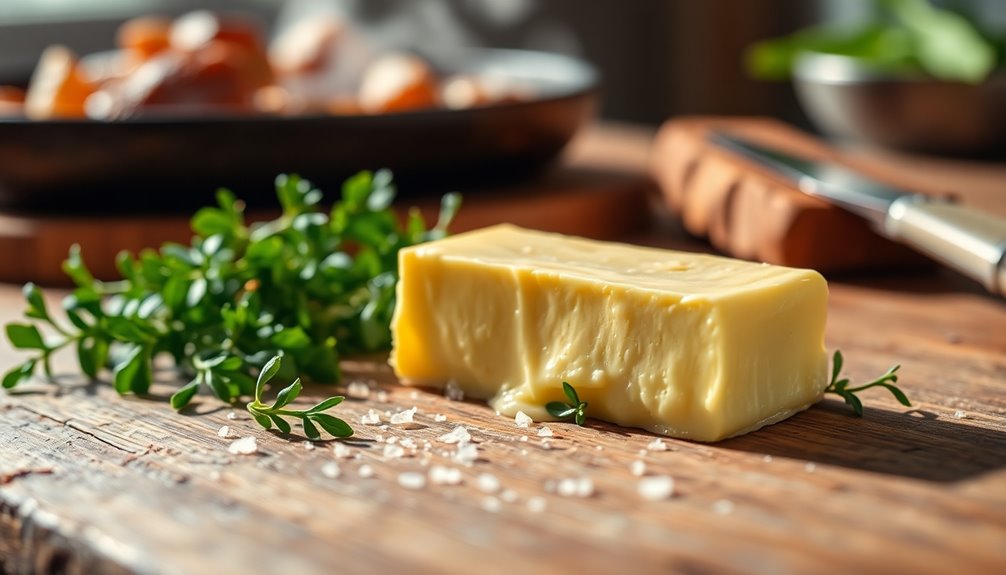Picture yourself biting into a steaming slice of pizza with a perfectly golden crust that is infused with the delicious scent of garlic.
With just a few simple ingredients and some easy steps, you can create your own homemade garlic butter to take your pizza crust to new heights.
In this article, we will guide you through the process, sharing tips and tricks along the way to ensure your garlic butter is perfectly infused and ready to elevate your pizza game.
Key Takeaways
- Garlic butter enhances the overall taste of the pizza crust by complementing the flavors of the toppings and cheese.
- It adds a nice golden color and crispy texture to the crust.
- Garlic is known for its antimicrobial and antioxidant properties, providing health benefits.
- Homemade garlic butter allows for customization of flavors and control of ingredients, ensuring freshness and ready-to-use butter.
Why Use Garlic Butter for Pizza Crust
Using garlic butter for pizza crust adds a delicious flavor and enhances the overall taste of the dish.
There are several pros and cons to consider when using garlic butter for pizza crust. On the positive side, garlic butter provides a rich and savory taste that complements the flavors of the toppings and cheese. It also adds a nice golden color and a crispy texture to the crust.
However, some people may find the strong garlic flavor overpowering or may not enjoy the added richness. In terms of health benefits, garlic is known for its antimicrobial and antioxidant properties. It may help boost the immune system and promote heart health. However, it is important to note that garlic butter is high in calories and fat, so moderation is key.
Now that you know the benefits and drawbacks of using garlic butter for pizza crust, let’s move on to the ingredients needed to make it.
Ingredients Needed for Garlic Butter
When it comes to garlic, there are more flavor options than you might think. From roasted to black garlic, there are alternative flavors that can add a unique twist to your dishes.
Additionally, knowing how to properly store garlic and understanding its shelf life is crucial in order to maintain its freshness and flavor.
Alternative Garlic Flavors
If you’re looking for different garlic flavors, you can try using roasted garlic or garlic powder in your butter for the pizza crust. These alternative garlic flavors can add a new dimension to your pizza experience.
Here are three options to consider:
-
Roasted Garlic: By roasting garlic cloves in the oven, you create a mellow and slightly sweet flavor. The roasted garlic can then be mashed and mixed with butter to create a delicious spread for your pizza crust.
-
Garlic Powder: If you prefer a more intense garlic flavor, garlic powder is a great option. It is made by dehydrating and grinding garlic cloves into a fine powder. Mix it with softened butter and spread it on your pizza crust for a burst of garlicky goodness.
-
Garlic Butter Variations: Don’t limit yourself to just pizza crust! You can use different garlic varieties, such as elephant garlic or black garlic, to create unique and flavorful garlic butter recipes for other dishes. Experiment with herbs, spices, or even Parmesan cheese to take your garlic butter to the next level.
With these alternative garlic flavors, you can elevate your pizza crust and explore new culinary possibilities.
Storage and Shelf Life
Storing roasted garlic in an airtight container in the refrigerator can extend its shelf life. This is important when it comes to preserving freshness and ensuring that your garlic butter is flavorful and ready to use whenever you need it.
Homemade garlic butter allows you to control the ingredients and customize the flavors to your liking. Unlike store-bought options, homemade garlic butter is free from preservatives and additives, giving you a more natural and authentic taste.
By following proper storage techniques, you can keep your roasted garlic fresh for up to two weeks in the refrigerator. This ensures that you always have a delicious and aromatic base for your garlic butter.
Now, let’s move on to step-by-step instructions for making this delectable spread.
Step-by-Step Instructions for Making Garlic Butter
To make garlic butter for your pizza crust, you’ll first need to gather all the necessary ingredients. Garlic butter is a delicious addition that enhances the flavor of your pizza. Here’s how you can make it without using a stove:
-
Start by mincing 2 cloves of garlic. You can use a garlic press or finely chop the garlic with a knife.
-
In a microwave-safe bowl, melt 4 tablespoons of unsalted butter. This can be done by microwaving it in 10-second intervals until fully melted.
-
Add the minced garlic to the melted butter and mix well. For extra flavor, you can also add a pinch of salt and dried herbs like oregano or basil.
Tips for Perfectly Infused Garlic Butter
When it comes to making garlic butter, finding the perfect garlic-to-butter ratio is crucial. Too much garlic can overpower the butter, while too little may leave you wanting for more flavor.
In addition to the ratio, there are various infusion methods for butter that can enhance the garlic flavor even further.
Lastly, understanding the proper storage and shelf life of garlic butter will ensure that it stays fresh and delicious for as long as possible.
Best Garlic-To-Butter Ratio
You’ll want to aim for a 1:2 ratio of minced garlic to softened butter for the perfect garlic butter for your pizza crust. This ratio ensures a strong garlic flavor without overpowering the buttery taste.
Here’s why this ratio works so well:
-
Balance: The 1:2 ratio strikes a balance between the pungent garlic and creamy butter, creating a harmonious blend of flavors that enhances the taste of your pizza crust.
-
Spreadability: With this ratio, the garlic butter spreads easily on the crust, ensuring an even distribution of flavor.
-
Versatility: This garlic butter ratio can also be used as a base for other garlic butter recipes, such as garlic bread or garlic shrimp.
If you’re looking for garlic butter substitutes, you can try using minced garlic mixed with olive oil or even garlic powder mixed with melted butter. These alternatives will give your pizza crust a similar garlic flavor, although the taste may differ slightly. Experiment and find the substitute that suits your taste buds best.
Infusion Methods for Butter
For infusing butter with different flavors, try using herbs like rosemary or thyme to add a fragrant twist. There are various types of infused butter you can make, each offering its own unique taste and aroma.
For example, garlic-infused butter adds a rich and savory flavor to dishes, while lemon-infused butter adds a bright and refreshing citrus kick.
The benefits of using infused butter in cooking are numerous. Not only does it enhance the taste of your dishes, but it also adds depth and complexity to your recipes. The flavors from the infused butter permeate the food, creating a delicious and aromatic experience for your taste buds.
Now that you know the benefits of using infused butter, let’s move on to storage and shelf life.
Storage and Shelf Life
To properly store infused butter and ensure its freshness, it’s important to keep it in an airtight container and refrigerate it. Here are some tips to help you with long-term storage and preserving the freshness of your infused butter:
-
Use an airtight container: This will prevent any odors or flavors from seeping into the butter and ensure that it stays fresh for longer.
-
Refrigerate it: Infused butter should always be stored in the refrigerator to maintain its freshness. The cold temperature helps to slow down any bacterial growth and keeps the butter from spoiling.
-
Label and date the container: To keep track of the shelf life of your infused butter, make sure to label the container with the date it was made. This will help you know when it’s time to use it or discard it.
How to Apply Garlic Butter to Pizza Crust
Spread the garlic butter generously onto the pizza crust, ensuring that every inch is covered. This step is crucial to achieving a flavorful and aromatic crust that will elevate your pizza experience.
But don’t limit yourself to just pizza! Garlic butter is a versatile ingredient that can enhance a variety of dishes. From spreading it on bread for a delicious garlic bread to using it as a sauce for pasta or grilled vegetables, the possibilities are endless.
You can even experiment with different variations of garlic butter by adding herbs like parsley, basil, or rosemary for additional flavor.
Now that you know how to apply garlic butter to your pizza crust, let’s explore the alternative uses for homemade garlic butter in the next section.
Alternative Uses for Homemade Garlic Butter
Once you’ve prepared the garlic butter, it’s time to get creative with its versatile uses in various dishes. Here are three alternative uses for your homemade garlic butter that not only add flavor but also provide health benefits:
-
Spread it on bread: Garlic butter is perfect for spreading on bread, whether it’s for making garlic bread or simply adding a burst of flavor to your favorite sandwich. The garlic’s antimicrobial properties can help boost your immune system and fight off infections.
-
Toss it with pasta: Mix your garlic butter with cooked pasta for a quick and delicious meal. The garlic’s sulfur compounds have been shown to have anti-inflammatory and antioxidant effects, which can help promote heart health.
-
Use it as a marinade: Coat your meat or vegetables with garlic butter before grilling or roasting for a flavorful and tender result. Garlic contains compounds that can help lower cholesterol levels and regulate blood pressure.
With its other uses and health benefits, homemade garlic butter is a versatile and nutritious addition to your cooking repertoire. Get creative and enjoy its delicious flavor and health benefits in various dishes!
Conclusion
In conclusion, making garlic butter for your pizza crust is a simple and delicious way to elevate your homemade pizza game. By infusing butter with the aromatic flavors of garlic, you create a mouthwatering combination that adds depth and richness to every bite.
With just a few ingredients and easy-to-follow instructions, you can whip up your own batch of garlic butter in no time. So go ahead and give it a try – your taste buds will thank you!
It’s like adding a burst of flavor that dances on your tongue.
